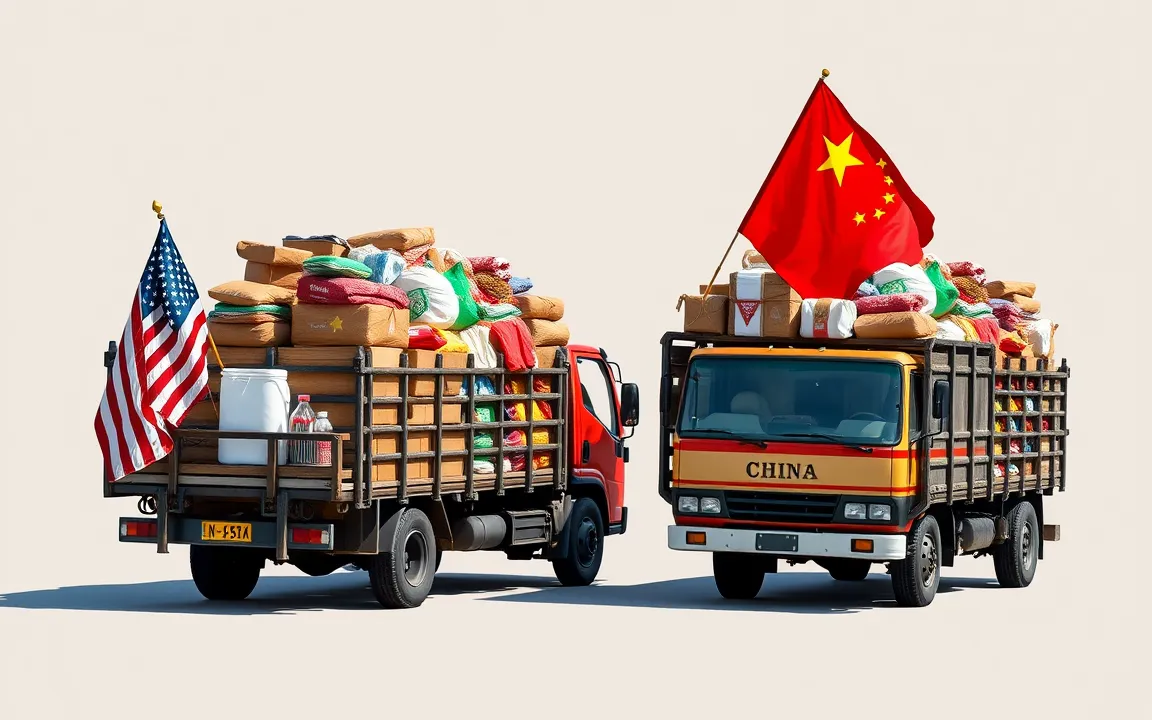The 90-day tariff truce between the US and China is expected to increase shipments and production over the next three months.
The de-escalation also provides relief for China’s economy.
“We now believe H1 growth will be stronger than previously expected, but growth in H2 will be under pressure due to the uncertain trade outlook beyond the 90-day period,” Tommy Wu, senior economist at Commerzbank AG, said in a report.
Effective May 14, the US will reduce its additional 145% tariff on Chinese imports to 30% for 90 days.
In response, China will also lower its retaliatory 125% tariff to 10%, aligning with the US reduction.
China has discontinued or terminated various non-tariff countermeasures, including limitations on the export of essential minerals to the United States.
The next 90 days
Over a 90-day timeframe, American firms will increase their imports from China, and concurrently, Chinese manufacturers will accelerate production to satisfy this revived demand, according to Commerzbank.
Retailers and logistics companies are reportedly preparing to frontload shipments, according to news reports.
“The problem is that US-bound carriers have already been reduced towards the end of April in response to falling volumes from China to the US,” Wu said.
It takes time to shift capacity back again. Also, the 90-day window is short.
The urgency for companies to transport goods to the US is expected to intensify, potentially leading to a significant increase in freight costs, he added.
New tariff ceiling
US Treasury Secretary Scott Bessent clarified that the previously announced 34% reciprocal tariff on China, initially stated on April 2, would represent the maximum possible rate.
This is on top of the 20% fentanyl-related tariffs, which puts the effective ceiling of the additional tariff on China at 54% after the 90-day period.
The anticipated outcome of US-China trade negotiations is a final tariff rate lower than the current “ceiling”.
However, 90 days will probably not be sufficient for the two parties to negotiate and finalize the specifics of an agreement, according to Wu.
To decrease its trade deficit with China, the US will likely pressure China to eliminate alleged industrial subsidies and other practices.
The US contends these measures are necessary to restore the trade balance.
However, China’s interest lies in supporting domestic technology and innovation, which conflicts with these US demands.
“It will be even more difficult for China to agree to importing more from the US today, given its goal to diversify import sources for national security purposes,” Commerzbank’s Wu said.
China economy
According to Commerzbank, the tariff relief is likely to provide temporary relief to China’s economy.
Due to accelerated exports, China’s economy is now projected to maintain a reasonable growth rate in the second quarter, contrary to previous expectations of a significant deceleration.
The 5.4% year-over-year growth in the first quarter was significantly driven by net exports, which constituted 40% of this expansion.
The German bank believes that exports would support the Chinese economy in the next two quarters.
“However, beyond the 90-day period, it is too early to tell whether the truce will continue, and what the tariff rates will be,” Wu said.
Although the current US tariff rate of 30% is a significant reduction from the previous 145% and is not expected to reach such high levels again, it remains high compared to historical rates, and its impact should be carefully considered.
Businesses and their supply chains will adapt and reorganize in response to the evolving trade landscape.
Trade diversion to persist
Ongoing tariff uncertainty will continue to drive trade diversion and supply chain adjustments, Commerzbank said.
Despite steep US tariffs on Chinese goods implemented in April, China’s overall exports surprisingly increased by 8.1% year-over-year.
This growth occurred even as exports to the US sharply declined by 21%, indicating a clear case of trade diversion.
Despite a decline in exports to the US, overall exports remained stable due to increased shipments to other markets, particularly the Association of Southeast Asian Nations.
Wu said:
This reflects trade diversion via third countries to the US. It is also evident that Chinese exporters have been expanding their sales in non-US markets, notably the EU.
The US is contemplating implementing “secondary tariffs.”
These tariffs would impose penalties on third-party countries or entities that engage in trade with the targeted nation, which in this instance is China.
“The final tariff rates that will be imposed on the Asian nations will affect the degree of trade diversion and the extent to which corporates will invest in these countries,” Wu added.
The post China’s economy gets reprieve: tariff reduction boosts short-term growth appeared first on Invezz




